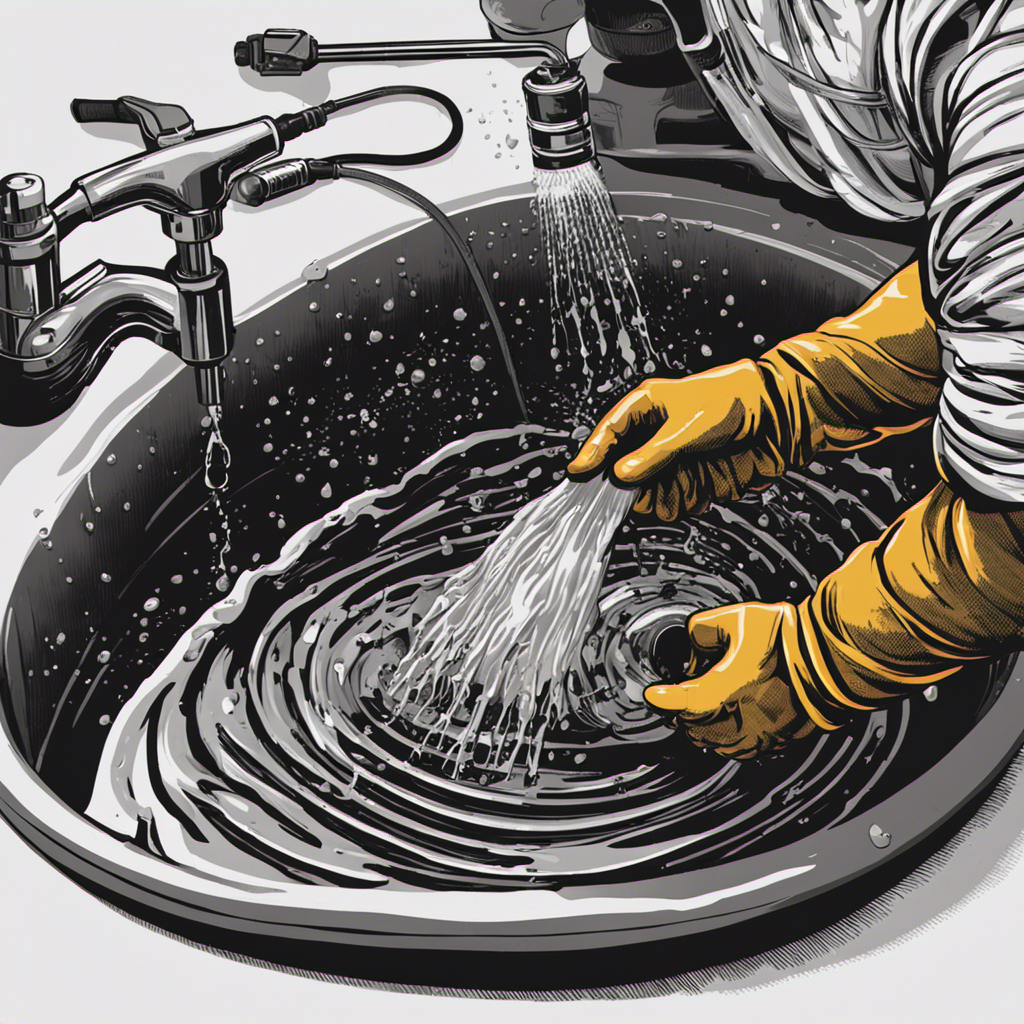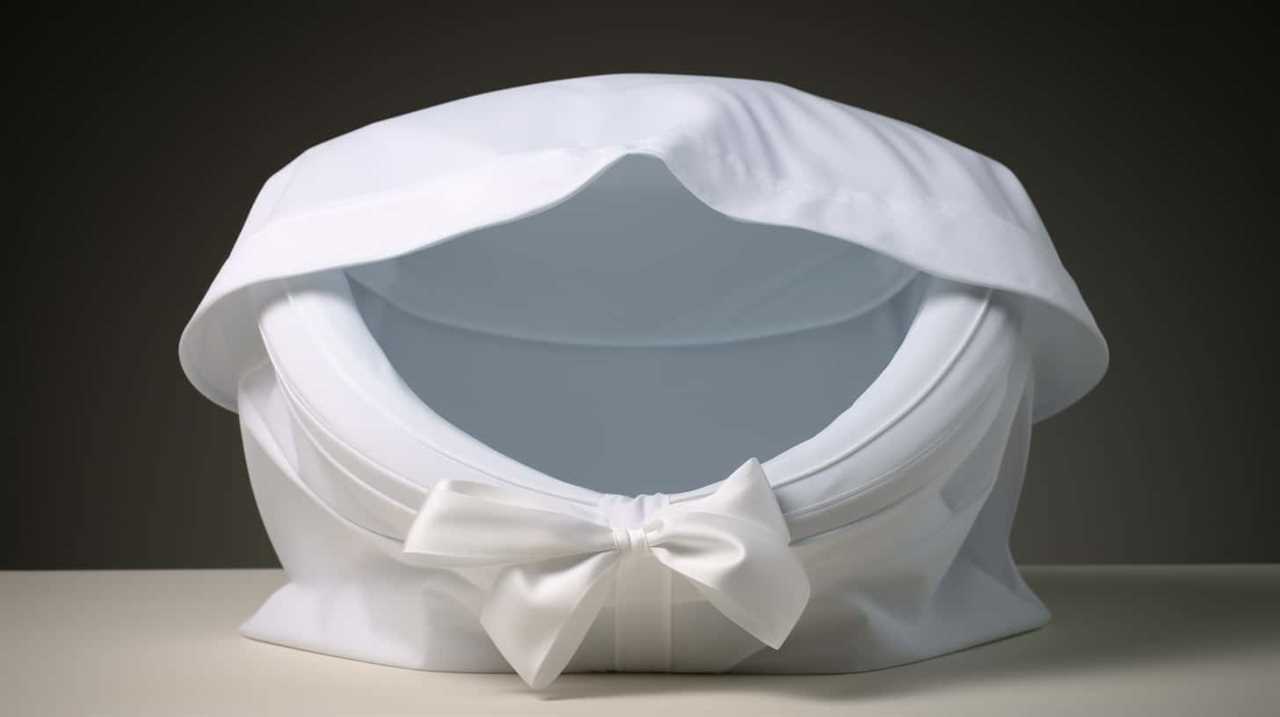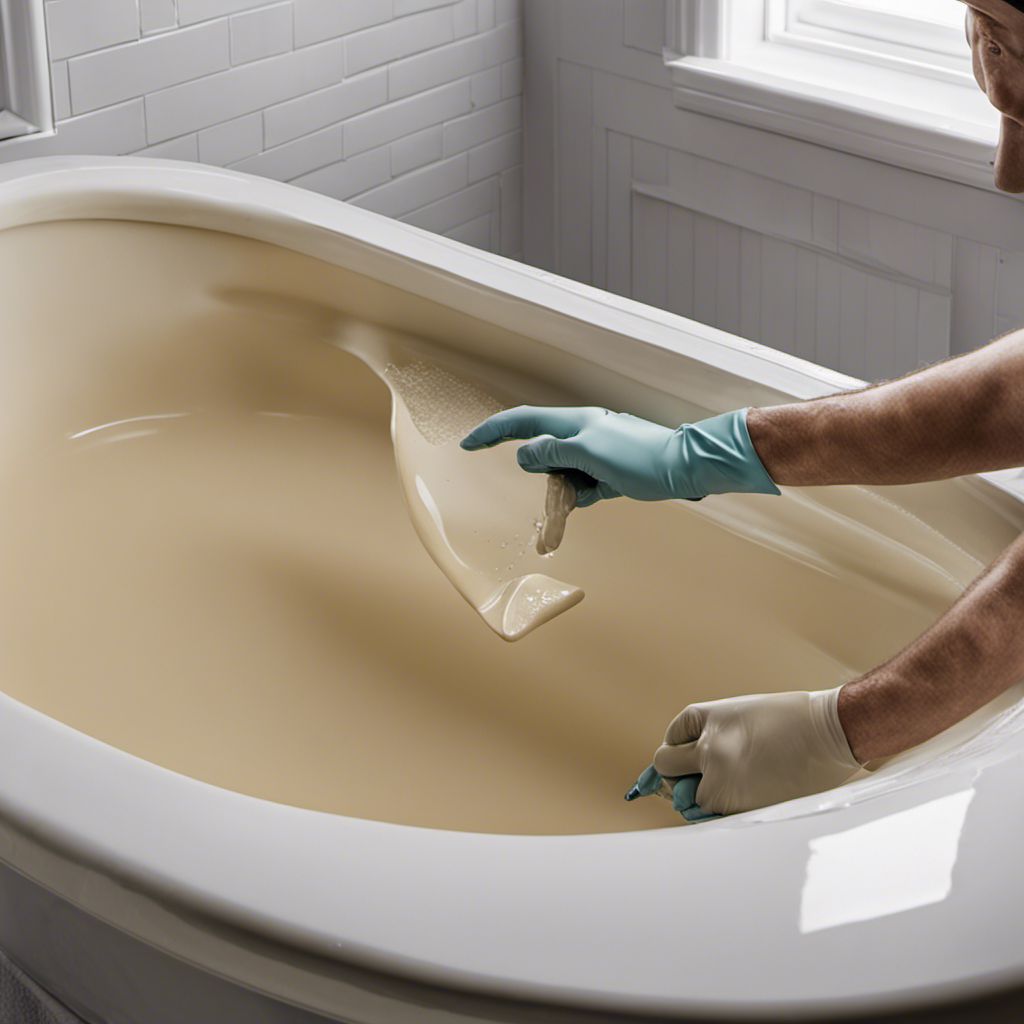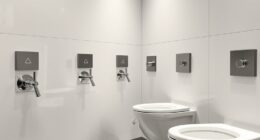Are you dealing with a sewage backup in your bathtub? Don’t panic, I’ve got you covered.
In this article, I’ll walk you through the step-by-step process of cleaning up the mess and preventing future incidents. With my years of experience in dealing with sewage backups, I know exactly what it takes to get your bathtub back to its pristine condition.
So grab your supplies and let’s tackle this issue head-on. Trust me, you’ll be glad you did.
Key Takeaways
- Sewage backups in bathtubs are caused by clogged sewer lines, tree roots infiltrating pipes, or damaged sewer lines.
- Necessary supplies for cleaning sewage backup in a bathtub include a bucket, rubber gloves, a face mask, and disinfectant wipes.
- Precautions should be taken to prevent further contamination and ensure thorough cleanup, such as turning off the water supply, ventilating the space, and wearing protective clothing.
- The cleaning process involves removing standing water, disinfecting the area with a bleach and water mixture, and scrubbing the bathtub thoroughly with a heavy-duty cleaner.
Understanding the Sewage Backup Issue
Before we dive into how to clean up a sewage backup in your bathtub, let’s first understand the severity of the issue.
Dealing with a sewage backup is not only unpleasant but also poses serious health hazards. The main causes of sewage backups in bathtubs are clogged sewer lines, tree roots infiltrating the pipes, or a damaged sewer line.
To prevent these issues, it is essential to regularly maintain your plumbing system by not flushing anything other than toilet paper, avoiding pouring grease down the drain, and trimming tree roots near your sewer lines.
When a sewage backup occurs, it is crucial to act swiftly to minimize the health risks. Raw sewage contains harmful bacteria and viruses that can cause illnesses such as gastroenteritis, hepatitis, and respiratory infections.
Therefore, it is recommended to wear protective clothing, gloves, and a mask when cleaning up the mess.
Gathering the Necessary Supplies
To gather the necessary supplies, you’ll need a bucket, rubber gloves, a face mask, and disinfectant wipes.
Cleaning up a sewage backup in your bathtub can be a daunting task, but with the right tools and knowledge, it can be done safely and effectively.
Before you start, it’s important to protect yourself by wearing gloves and a face mask to avoid any potential health hazards. Additionally, using disinfectant wipes will help sanitize the area and prevent the spread of bacteria.
Clearing clogged drains and removing debris are crucial steps in the cleanup process. By following these steps, you can ensure a thorough and successful cleaning.
Now that we have the necessary supplies, let’s move on to preparing the area for cleaning.
Preparing the Area for Cleaning
Now that we’ve got all the necessary supplies, it’s time to get the area ready for cleaning.
When dealing with a sewage backup in the bathtub, it’s crucial to take certain precautions to prevent future damage and ensure a thorough cleanup.
First, I recommend turning off the water supply to the affected area to avoid any further contamination.
Next, it’s important to ventilate the space by opening windows and using fans to minimize the spread of odors and harmful bacteria.
Additionally, I highly advise wearing protective clothing, gloves, and a face mask to protect yourself from potential health hazards.
If the backup is extensive or if you’re unsure about handling the situation, it’s best to consider hiring professional help to ensure a safe and effective cleanup.
With the area properly prepared, we can now move on to cleaning the sewage backup in the bathtub.
Cleaning the Sewage Backup in the Bathtub
Once you’ve taken the necessary precautions, it’s essential to begin sanitizing the affected area. Cleaning up a sewage backup in the bathtub can be a daunting task, but with the right approach, it can be done effectively. Here are some steps to follow:
- Wear protective gear such as gloves, goggles, and a mask to prevent any contact with harmful bacteria and fumes.
- Use a bucket or a wet-dry vacuum to remove as much standing water as possible before starting the cleaning process.
- Disinfect the affected area using a mixture of bleach and water. Be sure to follow the instructions on the bleach bottle for proper dilution.
- Scrub the bathtub thoroughly with a heavy-duty cleaner to remove any remaining residue or stains.
While these steps can help you clean a sewage backup in the bathtub, it’s important to note that some clogs may require professional help. If you’re unable to remove the clog or if the backup continues to occur, it’s best to contact a professional plumber to assess and resolve the issue.
Disinfecting and Preventing Future Sewage Backup
If you want to prevent future incidents, remember to regularly maintain your plumbing system and avoid flushing anything that could potentially cause a backup.
Regular maintenance is essential to prevent contamination and avoid health hazards associated with sewage backups.
One of the key steps in preventing contamination is disinfecting the affected area thoroughly.
After cleaning up the sewage backup, use a disinfectant that is specifically designed to kill bacteria, viruses, and other harmful microorganisms.
Make sure to follow the instructions on the disinfectant product for effective use.
Additionally, it is crucial to identify and address the root cause of the backup to avoid future incidents.
Hiring a professional plumber to inspect and maintain your plumbing system regularly can help identify any potential issues and prevent them from escalating into larger problems.
Taking these preventive measures will ensure a clean and safe environment for you and your family.
Conclusion
In conclusion, dealing with a sewage backup in your bathtub can be a daunting task. However, with the right supplies and proper cleaning techniques, you can successfully tackle the issue.
It is essential to take the necessary precautions to protect yourself and your surroundings from the harmful bacteria present in sewage. By disinfecting the area thoroughly and implementing preventative measures, you can ensure that future sewage backups are avoided.
Remember, while the process may be unpleasant, the end result will be a clean and safe environment for you and your family.










